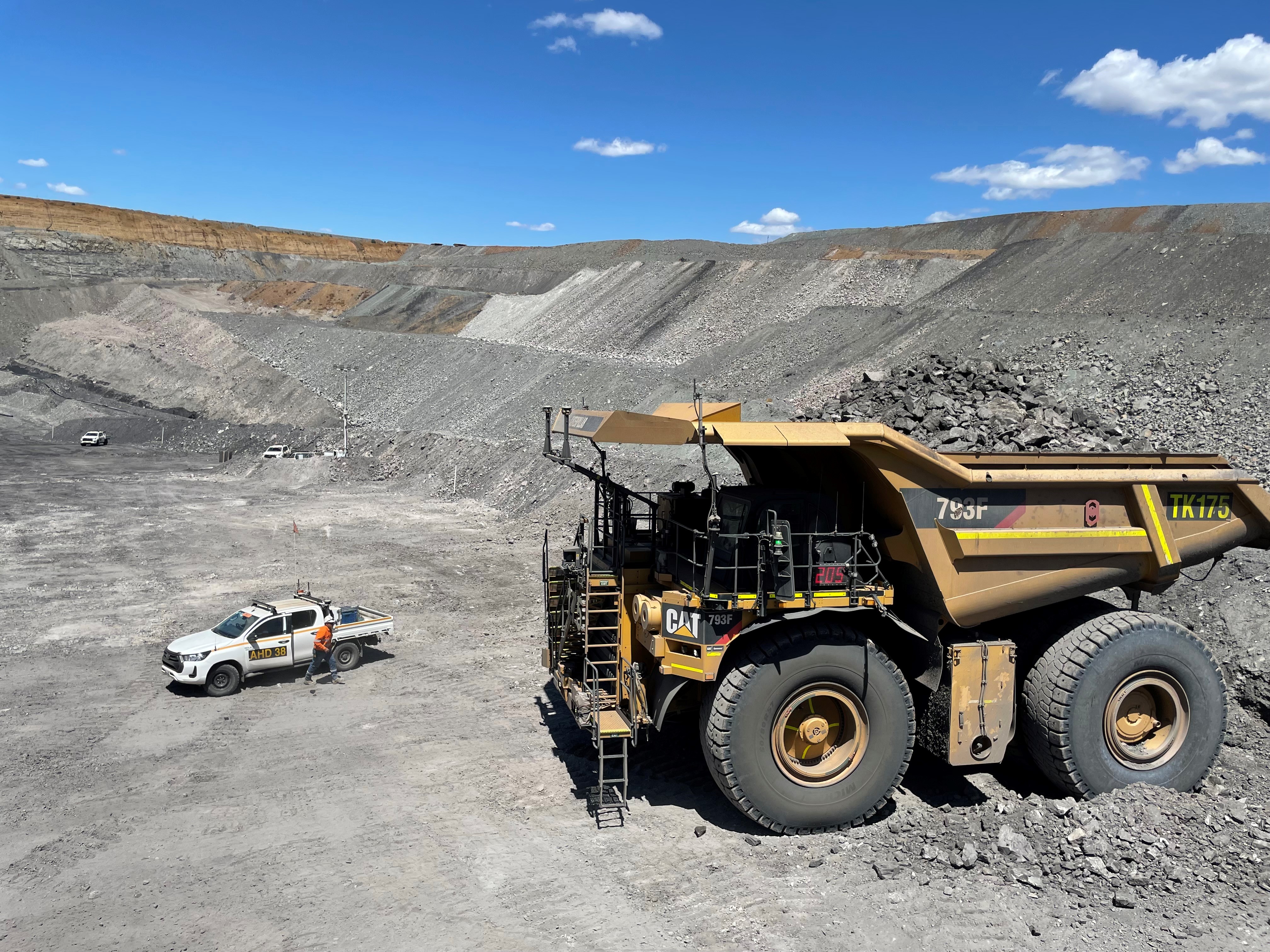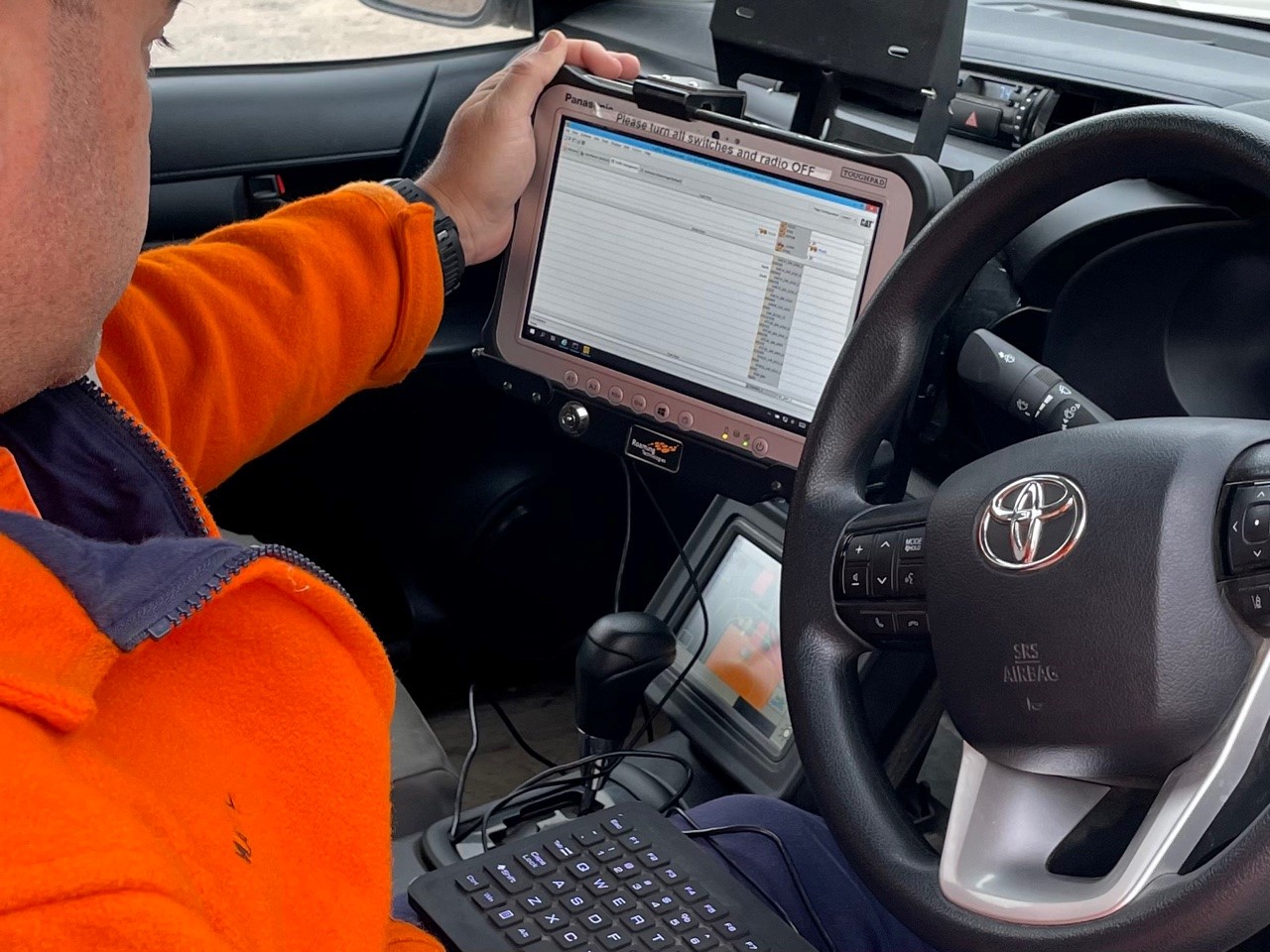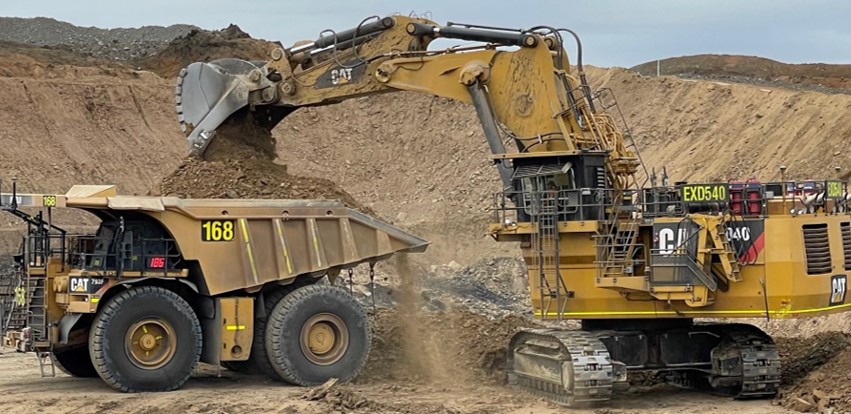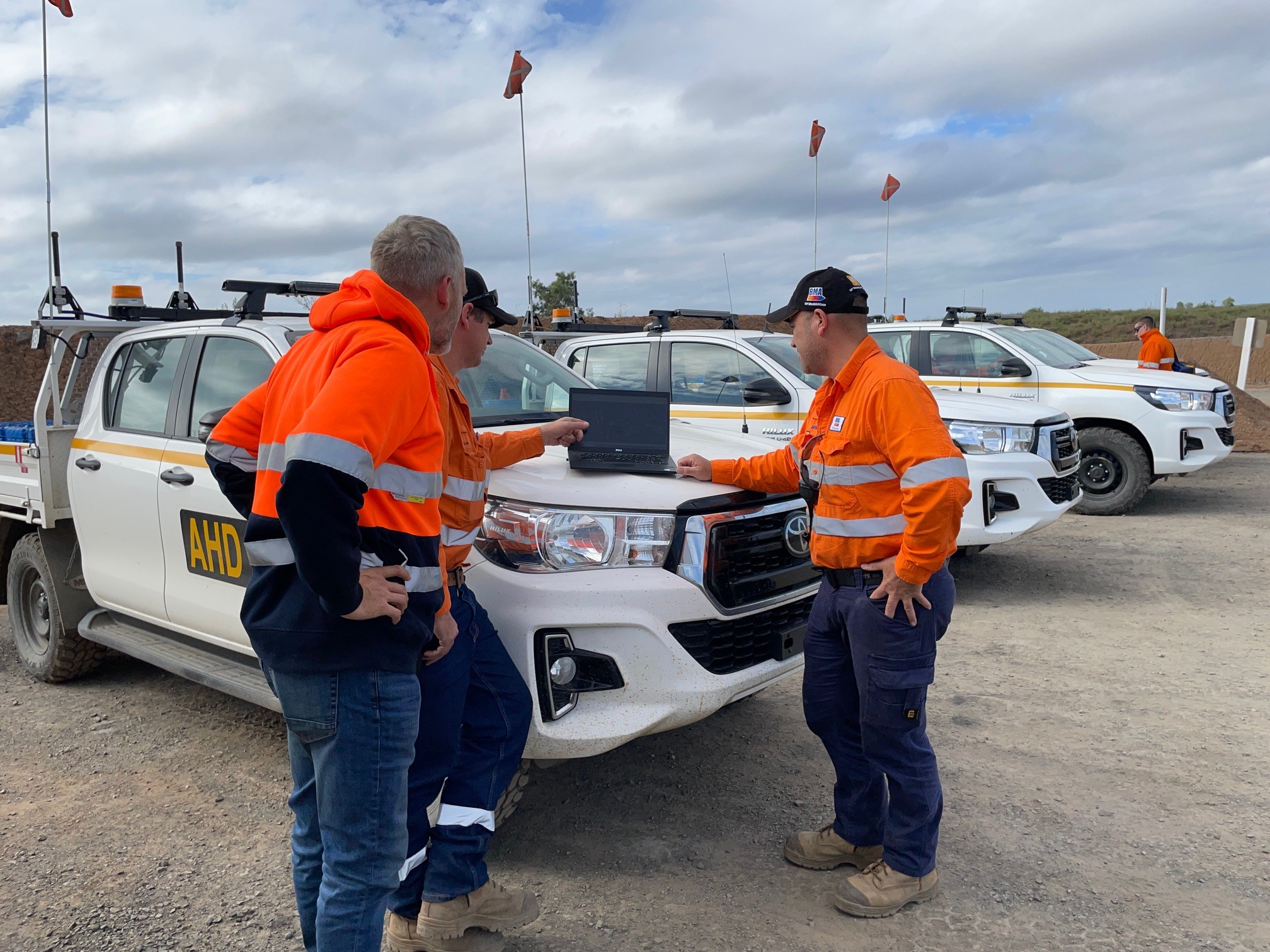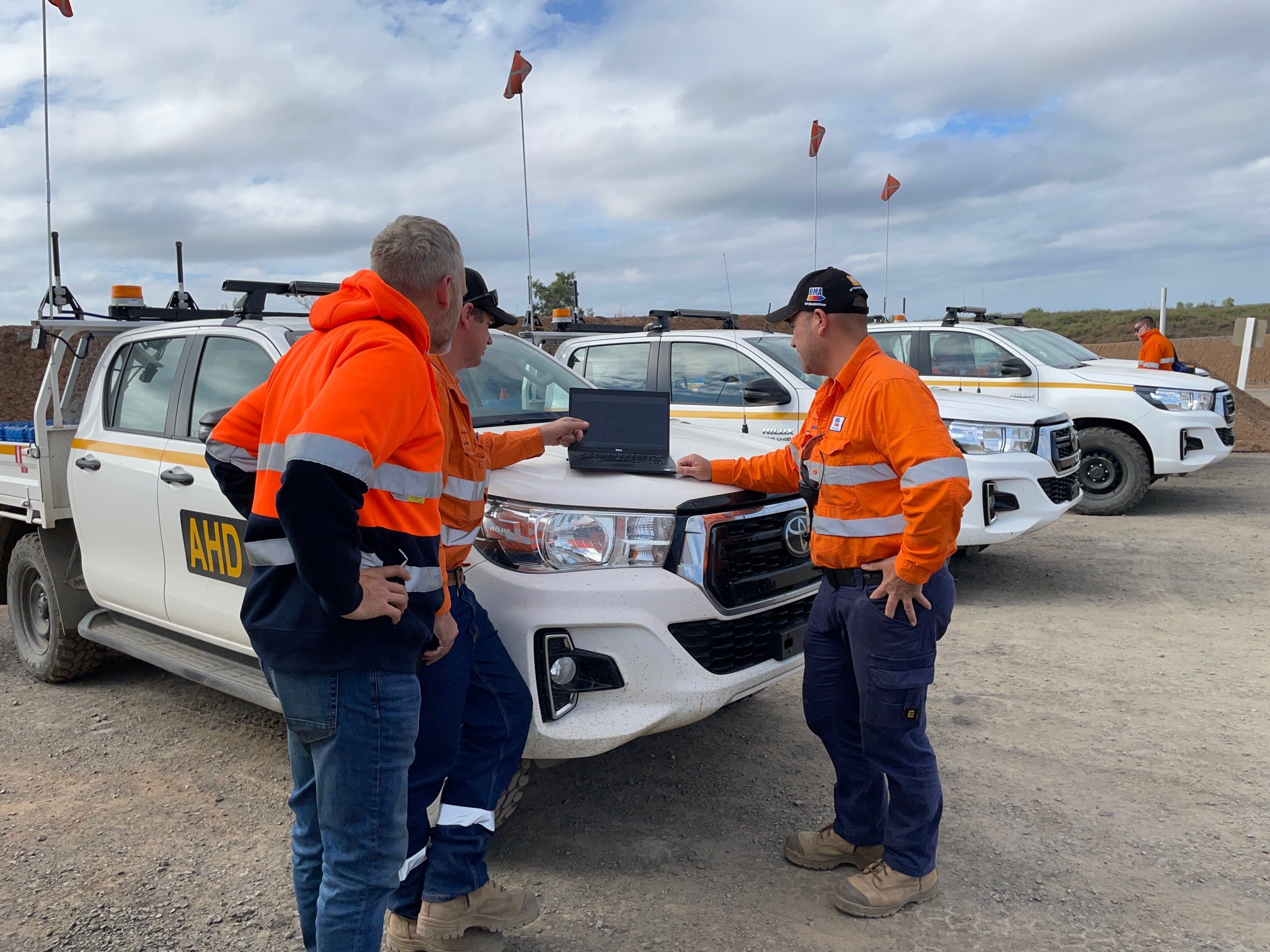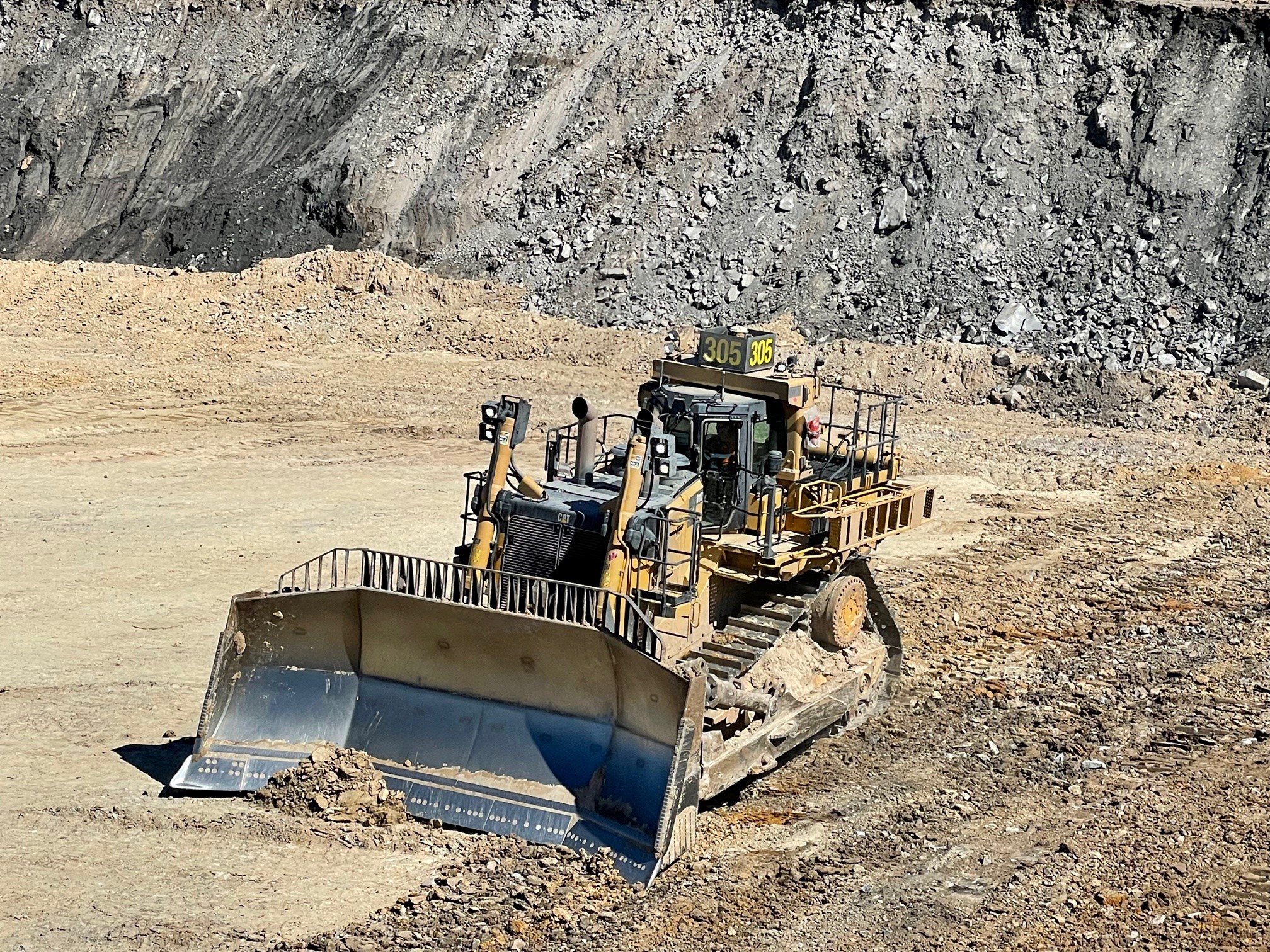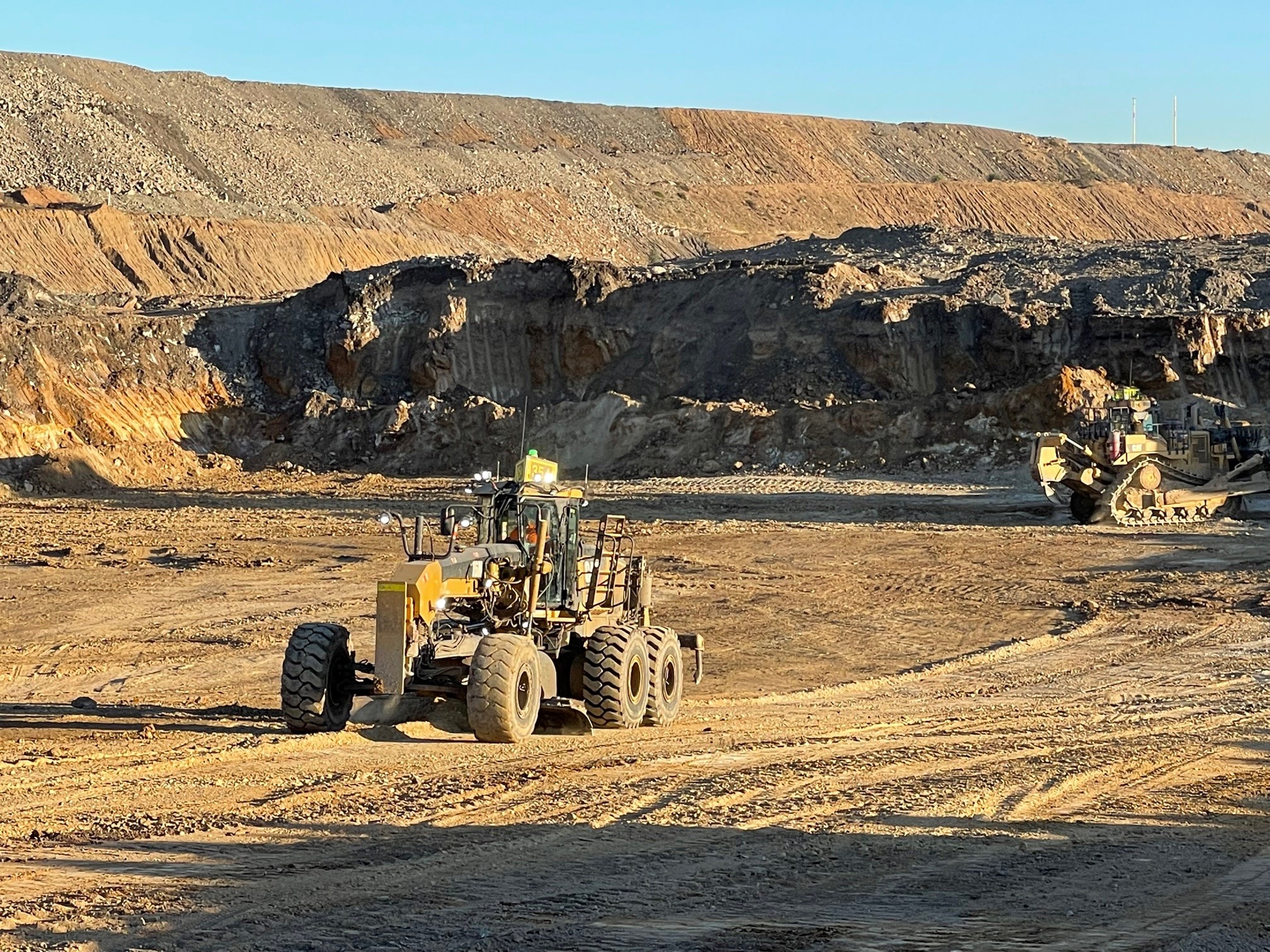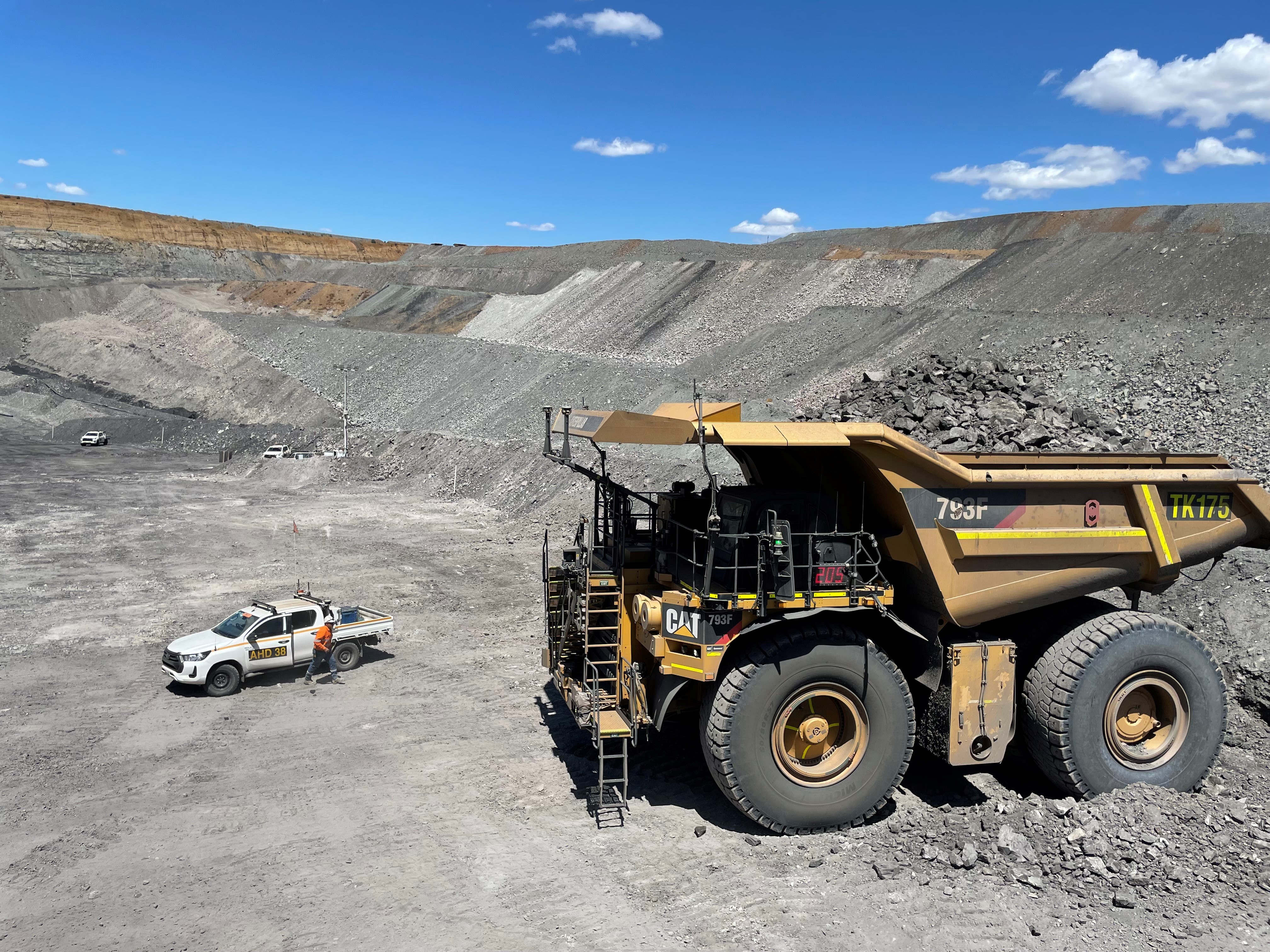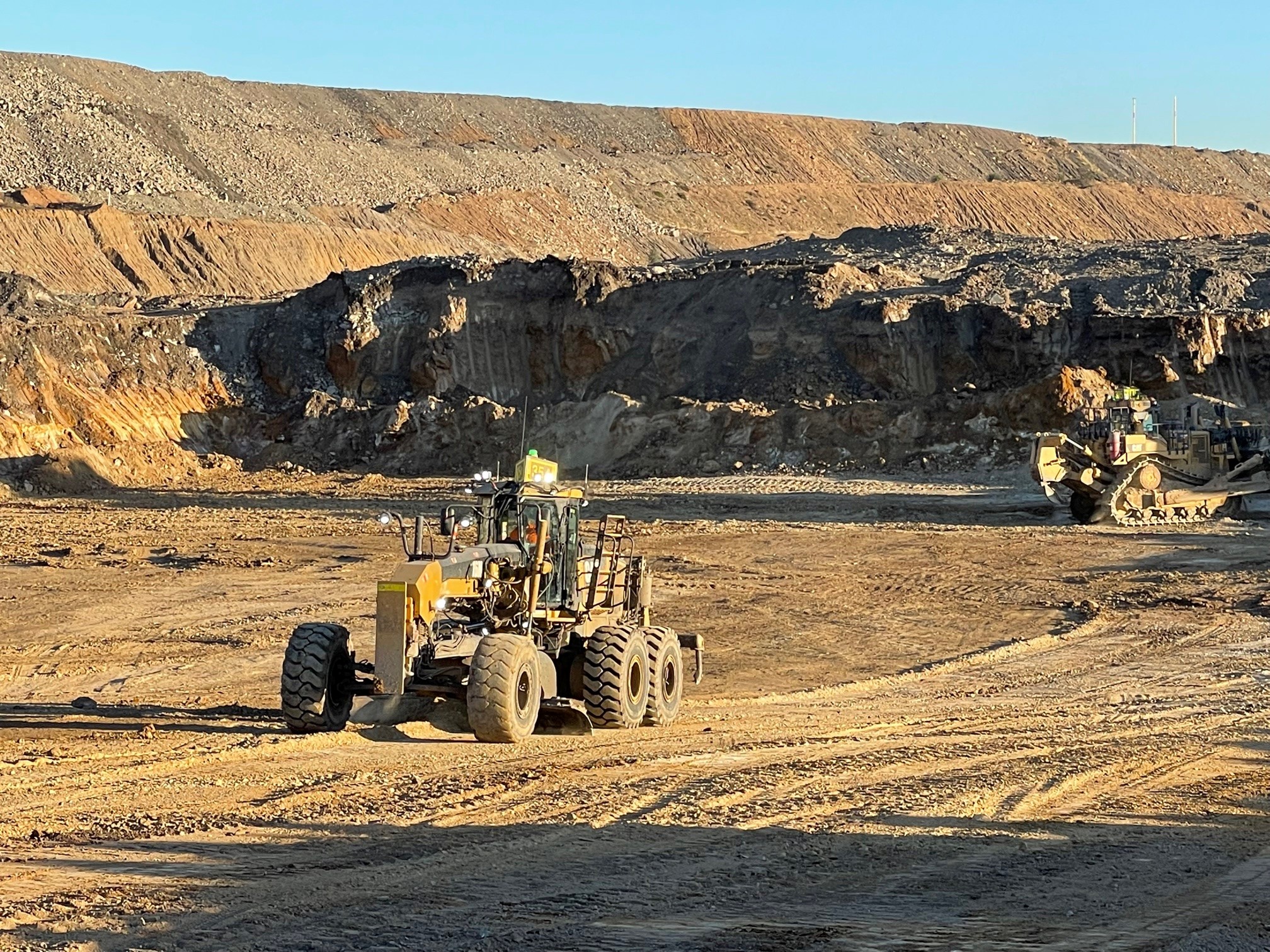Title Page
-
Date
-
Field Officer
-
Conducted By
Scoring System
-
For each criteria in this Field Verification provide a score from 1 - 5 to indicate the Field Officer's level of proficiency. The scoring system is as follows:
-
1. Not yet trained/does not understand the task/skill.
-
2. Has basic understanding of the task, but doesn’t always recognise when task needs to be performed, or cannot to perform the task without assistance.
-
3. Mostly understands the task but still requires further coaching to operate at the required level. Performs the task when required.
-
4. Competent – understands the task and completes it every time.
-
5. Has mastered the skill, could be considered an expert.
Good Performance is:
-
Trucks travel at maximum capable speed throughout the circuit.
-
Minimal truck on-circuit downtime.
-
Less than 12 ODS events per shift.
-
Monitoring trucks and respond immediately to stoppages.
-
Identify and rectify source of stoppages or speed reductions.
-
Virtual mine model complies with physical at all times.
-
Monitor dump availability to ensure dump space is available to AH Control at all times.
Field Verification
Start of Shift
-
Completes an effective handover with the oncoming Field Officer - mine model changes, load/dump plans, zones, etc.
- 1
- 2
- 3
- 4
- 5
- NA
-
Clearly understands area of responsibility within the pit and battery limits with other Field Officers.
- 1
- 2
- 3
- 4
- 5
- NA
-
Has correct page configuration loaded up on Client.
- 1
- 2
- 3
- 4
- 5
- NA
-
Upon entrance to mine, checks for truck stoppages and responds appropriately.
- 1
- 2
- 3
- 4
- 5
- NA
Load Plans
-
Accurately surveys load areas when required.
- 1
- 2
- 3
- 4
- 5
- NA
-
Inspects floor conditions, zone and informs appropriate clean up machine if work is required. Escalates to Production Supervisor as required.
- 1
- 2
- 3
- 4
- 5
- NA
-
Confirms locations of infrastructure align with virtual mine model and non-travel areas are marked with exclusion zones.
- 1
- 2
- 3
- 4
- 5
- NA
-
Monitors queue/exit lanes and liaises with Builder where there are opportunities for improvement.
- 1
- 2
- 3
- 4
- 5
- NA
Dump Plans
-
Verifies Dump Plans in timely manner.
- 1
- 2
- 3
- 4
- 5
- NA
-
Is aware of Dump Priority as per 24hr plan in area of accountability.
- 1
- 2
- 3
- 4
- 5
- NA
-
Accurately surveys dumps where required.
- 1
- 2
- 3
- 4
- 5
- NA
-
Checks dump plan settings and communicates with Dozer Operators to confirm if correct (number of dumps per spot, dump scripts checked - aligns with Fleets on circuit and material).
- 1
- 2
- 3
- 4
- 5
- NA
-
Inspects floor conditions, zone and informs appropriate clean up machine if work is required. Escalates to Production Supervisor as required.
- 1
- 2
- 3
- 4
- 5
- NA
-
Can identify if Dump Plans have correct lanes according to fleet running on circuit to ensure optimisation.
- 1
- 2
- 3
- 4
- 5
- NA
-
Confirms locations of infrastructure align with virtual mine model and non-travel areas are marked with exclusion zones.
- 1
- 2
- 3
- 4
- 5
- NA
-
If updating Dump Plans, Field Officer correctly follows the Pathway to Planning sequence.
- 1
- 2
- 3
- 4
- 5
- NA
-
Monitor and update dump scripts for optimal dumping as conditions change. Physically verify by inspecting and watching trucks tip.
- 1
- 2
- 3
- 4
- 5
- NA
-
Inspects queue and exit points both virtually and physically for optimisation. Rectifies with AH Builder (Load Plan). Communicates any changes to Dump Plan with AH Builder.
- 1
- 2
- 3
- 4
- 5
- NA
-
Monitors queue/exit lanes and liaises with Builder where there are opportunities for improvement.
- 1
- 2
- 3
- 4
- 5
- NA
-
Monitor all dumps not manned by a dozer to identify any required mine model changes (e.g. need for new/additional dump spots).
- 1
- 2
- 3
- 4
- 5
- NA
-
Can Field Officer Import LiDar in Dump Plans?
- 1
- 2
- 3
- 4
- 5
- NA
-
What is the max nodes allowed in plans (90) - Explain why and how your survey impacts these? (Drive at reasonable speed).
- 1
- 2
- 3
- 4
- 5
- NA
-
Creates Dump Plan with correct naming convention.
- 1
- 2
- 3
- 4
- 5
- NA
-
Explains Position Tolerance.
- 1
- 2
- 3
- 4
- 5
- NA
-
Explains Dump Length.
- 1
- 2
- 3
- 4
- 5
- NA
-
Explains Dump Width.
- 1
- 2
- 3
- 4
- 5
- NA
-
Explains Spill Offset.
- 1
- 2
- 3
- 4
- 5
- NA
-
Explains Heading Tolerance.
- 1
- 2
- 3
- 4
- 5
- NA
-
Explains Heading.
- 1
- 2
- 3
- 4
- 5
- NA
-
Explains reference point.
- 1
- 2
- 3
- 4
- 5
- NA
-
Explains material mix. How to check or change.
- 1
- 2
- 3
- 4
- 5
- NA
-
Explains what a Processor is and how to check what material is allowed.
- 1
- 2
- 3
- 4
- 5
- NA
-
Explains all Advanced setting and gives examples for each feature.
- 1
- 2
- 3
- 4
- 5
- NA
-
Small area optimization - When to use (meters etc) and it's impact on planning.
- 1
- 2
- 3
- 4
- 5
- NA
-
Narrow Area - When to use (meters etc.) Impact on planning.
- 1
- 2
- 3
- 4
- 5
- NA
-
Field officer ensures Plan U-Turn is unticked.
- 1
- 2
- 3
- 4
- 5
- NA
-
Explains when to use Entry Point.
- 1
- 2
- 3
- 4
- 5
- NA
-
Explains how to optimise que and exit points.
- 1
- 2
- 3
- 4
- 5
- NA
-
field Officer communicates all changes to AH Builder and hands Dump back.
- 1
- 2
- 3
- 4
- 5
- NA
AHT Circuits
-
Monitors AHT tiles for obstacles or health events that require Field Officer response and responds in an appropriate timeframe.
- 1
- 2
- 3
- 4
- 5
- NA
-
ield Officer actively opens red tiles without being prompted from AH Control for rapid response to AHTs with Health or Obstacles Events.
- 1
- 2
- 3
- 4
- 5
- NA
-
Field Officer rectifies or takes action to rectify Obstacles that require removal. i.e. moves tumble weed or calls AUX machine for clean up.
- 1
- 2
- 3
- 4
- 5
- NA
-
Monitors trucks for improvements to lane configuration, cornering, path optimisation.
- 1
- 2
- 3
- 4
- 5
- NA
-
Is aware of Circuit/Loading unit priority as per 24hr Plan in area of accountability.
- 1
- 2
- 3
- 4
- 5
- NA
-
Field Officer is aware of the naming and colour conventions - able to provide document.
- 1
- 2
- 3
- 4
- 5
- NA
-
Field Officer can identify node limit on zones - able to show how to identify through Zones Page.
- 1
- 2
- 3
- 4
- 5
- NA
-
Field Officer is able to show how to audit colour and naming convention through Zones page.
- 1
- 2
- 3
- 4
- 5
- NA
-
Field Officer removes redundant zones to ensure Mine Model accuracy and reduction in zones.
- 1
- 2
- 3
- 4
- 5
- NA
-
Creates Zones clockwise as per OEM.
- 1
- 2
- 3
- 4
- 5
- NA
-
Able to demonstrate splitting a zone.
- 1
- 2
- 3
- 4
- 5
- NA
-
Able to demonstrate placing Zone down on TOPE Screen - beneficial for upskilling personnel without a client screen.
- 1
- 2
- 3
- 4
- 5
- NA
-
Field Officer updates date in naming convention daily when altering or inspecting all zones.
- 1
- 2
- 3
- 4
- 5
- NA
-
Inspects/monitors lane segment lengths, widths and ensures haul routes have manned lanes ticked up to assist with AHT interactions. Rectifies where needed or contacts AH Builder.
- 1
- 2
- 3
- 4
- 5
- NA
-
Follows both loaded and Empty AHT to identify any abnormal or undesirable behaviours.
- 1
- 2
- 3
- 4
- 5
- NA
-
Identifies where Manned Lanes are required to reduce truck de-rate and prox events.
- 1
- 2
- 3
- 4
- 5
- NA
-
Monitors AHT speeds on client screens.
- 1
- 2
- 3
- 4
- 5
- NA
-
Understands minimum lane width for each class? 1.75x the truck width 797F (=17.08M) 793F (=14.52m)
- 1
- 2
- 3
- 4
- 5
- NA
-
Can demonstrate changing centre lines for optimisation of haul circuit.
- 1
- 2
- 3
- 4
- 5
- NA
-
Explain maximum length of lanes - 300M.
- 1
- 2
- 3
- 4
- 5
- NA
-
Explain and demonstrate lane splits and best placement for lane segment splits.
- 1
- 2
- 3
- 4
- 5
- NA
-
Explain and demonstrate lane splits at intersections and where splits should be located.
- 1
- 2
- 3
- 4
- 5
- NA
-
Can utilise and explain Site Monitor Exception Mode.
- 1
- 2
- 3
- 4
- 5
- NA
-
TPI and Lanes - When wheel rolling should new lanes be built or widened for TPI (If room available)?
- 1
- 2
- 3
- 4
- 5
- NA
-
Can identify lane length, travel times, and speed limits through Lane Editor. **Lane speeds placed here are not easily identified and is a good trouble shooting task***
- 1
- 2
- 3
- 4
- 5
- NA
-
Identified U-Turn lanes on haul roads that are not being utilised for single use are escalated to AH Builder for removal.
- 1
- 2
- 3
- 4
- 5
- NA
-
Can show how to restrict lanes to empty/loaded and by truck class.
- 1
- 2
- 3
- 4
- 5
- NA
-
If required and able to Field Officer prioritises "Single Lanes" around U/S machines keeping circuit cycle priority - Communicates the ability for single lanes with AH Control.
- 1
- 2
- 3
- 4
- 5
- NA
-
AH Field Officer prioritises Health Events - i.e truck on dig floor over dump if secondary dump is available for AH Control to reallocate to.
- 1
- 2
- 3
- 4
- 5
- NA
-
Can create new lanes with out interrupting current Haul Circuit (builds new lanes prior to removing old). Checks and confirms travel times to ensure new lanes are equal or better optimised.
- 1
- 2
- 3
- 4
- 5
- NA
-
What is the max OEM grade for AHT's - 15%.
- 1
- 2
- 3
- 4
- 5
- NA
-
What is the "CSV" Survey import?
- 1
- 2
- 3
- 4
- 5
- NA
-
Do we snap lanes to Surface? Why not? a) AHT's update surface as the travel. When can lanes be manualy snapped to Surface
- 1
- 2
- 3
- 4
- 5
- NA
-
What are you looking for to ensure deadlocks are not presented in dump plans and load plans.
- 1
- 2
- 3
- 4
- 5
- NA
-
Field Officer understands how to Simple Assign trucks to lane segments - (AH Control request).
- 1
- 2
- 3
- 4
- 5
- NA
-
Can explain how completing surveys outside of Dynamic area's are important to assist AHT's (Surface updates, Safety).
- 1
- 2
- 3
- 4
- 5
- NA
-
What is the desired wheel position for High Wall Surveys when completing survey in LV?
- 1
- 2
- 3
- 4
- 5
- NA
-
Can Field Officer import Surveys?
- 1
- 2
- 3
- 4
- 5
- NA
-
Appropriately identifies the need for and assists AH Builder with: • speed zones on ramps for gear change restriction • speed zones and driver behaviour regions on rough terrain. • speed and traction zones for wet roads.
- 1
- 2
- 3
- 4
- 5
- NA
-
Reviews all temporary zones (speed, traction, exclusion, TPI, RTOD) and effectively updates/removes as required. Physically verifies zones.
- 1
- 2
- 3
- 4
- 5
- NA
-
Timely response to traction events – inspects, implements appropriate controls and document what actions were taken.
- 1
- 2
- 3
- 4
- 5
- NA
-
Monitor trucks for unexpected behaviours.
- 1
- 2
- 3
- 4
- 5
- NA
-
Monitors pit conditions (haul roads, windrows, etc) and effectively identifies where remediation is required. Communicates to Mining Supervisor and Mine Services. Creates appropriate zones.
- 1
- 2
- 3
- 4
- 5
- NA
-
Identifies passable zones that can be rectified by near by AUX machines to increase AHT performance. Action taken by Field Officer.
- 1
- 2
- 3
- 4
- 5
- NA
-
Engages Pit Operator in the first instance to action key routines, e.g., recover trucks, escorts, move lighting plants
- 1
- 2
- 3
- 4
- 5
- NA
End Of Shift
-
Field Officer ensures car is fueled and LV cleaned for safe operation prior to ending shift.
-
Field Officer raises all concerns for circuits to relevant pit Supervisor for hand over.
-
Field Officer checks all Zones prior to leaving circuit.
-
Field Officer completes priority works prior to leaving circuit.
-
Field Officer completes handover sheet (iPad), ensures priority works are listed for on coming Field Officer including pictures of relevant work areas of concern.
Summary
-
Detail any additional coaching/observations made.
-
Detail any CMW feedback received.
